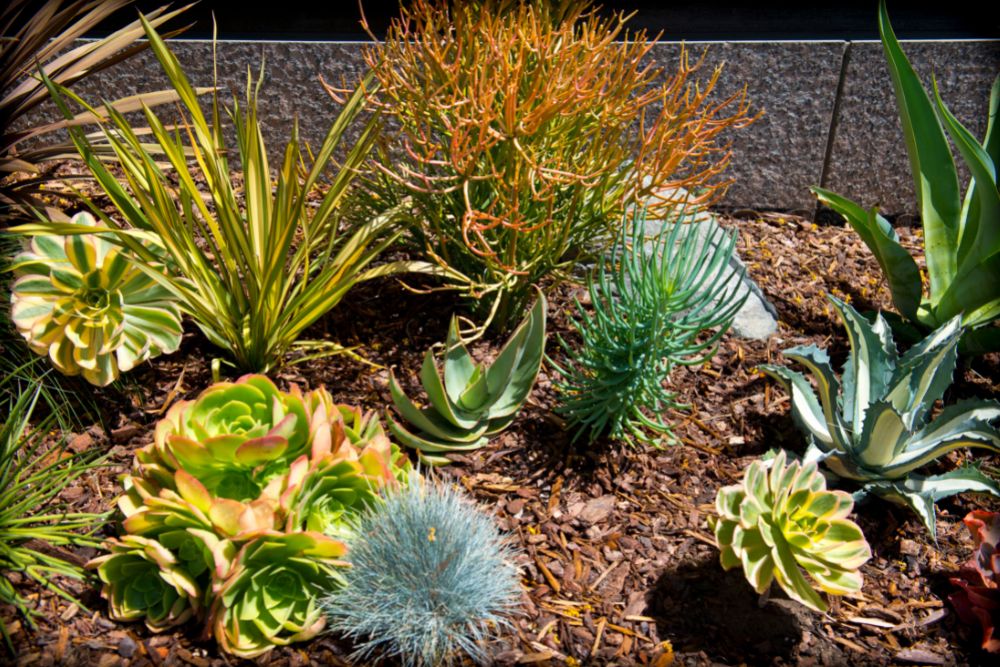The world is waking up to the undeniable importance of sustainability. From the clothes we wear to the food we eat, we’re all becoming more conscious of our environmental footprint. And that awareness extends to our outdoor spaces, too. The way we care for our lawns, gardens, and overall landscapes has a significant impact on the planet. That’s where sustainable landscape maintenance companies come in – offering a greener, healthier, and more responsible approach to keeping our outdoor environments thriving. This comprehensive guide will delve into the world of sustainable landscape maintenance, exploring its benefits, best practices, and how to find the right company to nurture your green spaces responsibly.
What is Sustainable Landscape Maintenance?
Sustainable landscape maintenance isn’t just about mowing the lawn and trimming hedges. It’s a holistic approach that considers the environmental impact of every practice. It’s about minimizing waste, conserving resources, and promoting biodiversity. Instead of relying on harsh chemicals and energy-intensive methods, sustainable practices focus on working with nature to create healthy, resilient landscapes.
Think of it as a commitment to a long-term relationship with your outdoor space, one built on respect for the environment and a deep understanding of its delicate balance. It’s about creating a beautiful and functional landscape that also contributes to a healthier planet for future generations.
The Benefits of Sustainable Landscape Maintenance
Choosing sustainable landscape maintenance offers a wealth of benefits, both for your property and the environment:
- Reduced Environmental Impact: This is perhaps the most significant advantage. Sustainable practices minimize the use of pesticides and herbicides, which can contaminate water sources, harm wildlife, and negatively affect human health. They also reduce the reliance on gas-powered equipment, lowering greenhouse gas emissions.
- Water Conservation: Sustainable methods prioritize water efficiency. This includes using drought-tolerant plants, implementing efficient irrigation systems (like drip irrigation), and practicing water-wise watering techniques. This not only conserves a precious resource but also lowers your water bills.
- Improved Soil Health: Sustainable practices focus on building healthy soil through composting, mulching, and other techniques. Healthy soil is more fertile, retains water better, and supports a wider variety of plant life. This leads to a more resilient and vibrant landscape.
- Enhanced Biodiversity: Sustainable landscaping encourages biodiversity by creating habitats for beneficial insects, birds, and other wildlife. This can transform your yard into a thriving ecosystem, making it a more enjoyable and engaging space.
- Healthier Environment for People and Pets: By eliminating or minimizing the use of harmful chemicals, sustainable landscaping creates a safer and healthier environment for you, your family, and your pets.
- Cost Savings in the Long Run: While the initial investment in sustainable practices might sometimes be slightly higher, the long-term cost savings are often substantial. This includes reduced water bills, lower fertilizer costs, and less need for expensive treatments to address pest or disease problems.
- Increased Property Value: Sustainable landscaping is increasingly seen as a desirable feature, potentially increasing the value of your property.
Key Practices of Sustainable Landscape Maintenance
Sustainable landscape maintenance companies employ a range of practices to achieve their goals. Here are some of the most common and effective:
1. Soil Health Management
Healthy soil is the foundation of any thriving landscape. Sustainable practices emphasize building and maintaining healthy soil through:
- Composting: Using compost to enrich the soil with organic matter. Compost improves soil structure, water retention, and nutrient availability.
- Mulching: Applying a layer of organic mulch (such as wood chips, shredded bark, or straw) around plants. Mulch helps retain moisture, suppress weeds, moderate soil temperature, and improve soil health.
- Cover Cropping: Planting cover crops (like clover or rye) to improve soil structure, prevent erosion, and add nutrients to the soil.
- Avoiding Chemical Fertilizers: Opting for organic fertilizers or compost tea to provide nutrients to plants without harming the environment.
2. Water Conservation
Water is a precious resource, and sustainable practices prioritize its efficient use:
- Drought-Tolerant Plants: Selecting plants that are well-suited to the local climate and require minimal watering.
- Efficient Irrigation Systems: Installing drip irrigation systems or soaker hoses that deliver water directly to the roots of plants, minimizing water waste.
- Smart Irrigation Controllers: Using controllers that adjust watering schedules based on weather conditions and soil moisture levels.
- Rainwater Harvesting: Collecting rainwater for irrigation purposes.
- Water-Wise Watering Techniques: Watering deeply but infrequently, and watering early in the morning to reduce water loss through evaporation.
3. Integrated Pest Management (IPM)
IPM is a holistic approach to pest control that minimizes the use of pesticides. It involves:
- Monitoring for Pests: Regularly inspecting plants for signs of pests or diseases.
- Identifying Pests: Accurately identifying the pests to determine the most effective control methods.
- Using Natural Predators: Encouraging beneficial insects (like ladybugs and lacewings) that prey on pests.
- Employing Biological Controls: Using natural substances or organisms to control pests.
- Using Pesticides as a Last Resort: If pesticides are necessary, using the least toxic option and applying them only when and where needed.
4. Reducing Waste and Pollution
Sustainable companies strive to minimize waste and pollution through:
- Using Electric or Manual Equipment: Opting for electric mowers, trimmers, and other equipment to reduce emissions.
- Composting Green Waste: Recycling grass clippings, leaves, and other green waste to create compost.
- Proper Disposal of Chemicals and Waste: Following all local regulations for the proper disposal of hazardous materials.
5. Promoting Biodiversity
Sustainable landscaping actively promotes biodiversity by:
- Planting Native Plants: Native plants are well-adapted to the local climate and provide food and shelter for native wildlife.
- Creating Habitats for Wildlife: Building birdhouses, bat houses, and other structures to attract wildlife.
- Leaving Natural Areas: Allowing some areas of the landscape to remain in a natural state, providing habitat for wildlife.
- Avoiding Monoculture Planting: Planting a variety of plants to support a diverse ecosystem.
How to Find a Sustainable Landscape Maintenance Company
Finding the right sustainable landscape maintenance company is crucial to achieving your environmental goals. Here’s how to find a company that aligns with your values:
1. Research and Recommendations
Start by researching local landscape maintenance companies. Look for companies that specifically mention sustainability on their website or in their marketing materials. Ask for recommendations from friends, family, neighbors, or online review sites. Consider asking your local garden center or environmental organizations for recommendations.
2. Review Their Services
Once you have a list of potential companies, review their services carefully. Do they offer the specific sustainable practices you are looking for? Do they use organic fertilizers, implement water-wise irrigation, and practice IPM? Be sure to read the fine print and understand exactly what services are included.
3. Inquire About Their Practices
Don’t hesitate to ask potential companies about their practices. Ask specific questions about their use of pesticides, their approach to water conservation, and their soil management techniques. A reputable sustainable company will be happy to answer your questions and provide detailed information about their methods.
4. Check for Certifications and Accreditations
Look for companies that have certifications or accreditations from reputable organizations. Some examples include:
- Certified Landscape Professional (CLP): This certification demonstrates a commitment to professional standards and best practices.
- Organic Land Care Accreditation: This accreditation indicates a company’s commitment to organic land care principles.
- LEED Certification: Companies that work on LEED-certified projects often incorporate sustainable practices.
5. Get a Detailed Proposal
Request a detailed proposal from each company you are considering. The proposal should outline the services they will provide, the materials they will use, the estimated costs, and the timeline for the project. Make sure the proposal clearly states their commitment to sustainable practices.
6. Check References and Reviews
Ask the companies for references from previous clients. Contact the references and ask about their experience with the company. Read online reviews to get an idea of the company’s reputation and customer satisfaction.
7. Consider Their Experience and Expertise
Choose a company with experience in sustainable landscape maintenance. They should have a thorough understanding of sustainable practices and be able to adapt their methods to your specific landscape and needs.
8. Evaluate Their Communication and Customer Service
Choose a company that is responsive, communicative, and easy to work with. They should be willing to answer your questions, address your concerns, and keep you informed about the progress of the project. Good customer service is essential for a positive experience.
Questions to Ask a Sustainable Landscape Maintenance Company
To ensure you choose the right company, here are some specific questions to ask:
- What types of fertilizers do you use? Are they organic?
- What is your approach to pest control? Do you use pesticides, and if so, what types?
- How do you conserve water? What type of irrigation systems do you use?
- How do you manage soil health? Do you use compost, mulch, or other soil amendments?
- Do you use electric or gas-powered equipment?
- How do you handle green waste? Do you compost or recycle it?
- Do you offer any guarantees or warranties?
- Can you provide references from previous clients?
- What certifications or accreditations do you have?
- What is your communication process, and how often will I receive updates?
Common Misconceptions About Sustainable Landscape Maintenance
There are several misconceptions about sustainable landscape maintenance that can prevent people from adopting these practices:
1. Sustainable Landscaping is More Expensive
While the initial investment might sometimes be slightly higher, sustainable practices often lead to long-term cost savings due to reduced water bills, lower fertilizer costs, and less need for expensive treatments. Furthermore, the increased property value associated with sustainable landscaping can offset the initial costs.
2. Sustainable Landscaping is Less Attractive
This is simply not true. Sustainable landscaping can be just as beautiful, if not more so, than traditional landscaping. It often features a wider variety of plants, creating a more diverse and visually interesting landscape. The focus on healthy soil and natural processes can lead to a more vibrant and resilient landscape.
3. Sustainable Landscaping Requires a Lot of Time and Effort
While some sustainable practices might require a bit more upfront planning, they often result in less maintenance in the long run. For example, drought-tolerant plants require less watering, and healthy soil is less prone to pest and disease problems. A sustainable landscape can be designed to be low-maintenance, freeing up your time and effort.
4. Sustainable Landscaping is Only for Large Properties
Sustainable practices can be adapted to any size property, from small urban gardens to large estates. Even small changes, such as using organic fertilizers or planting native plants, can make a positive impact.
5. Sustainable Landscaping is Ineffective
Sustainable practices are highly effective in creating healthy, beautiful, and resilient landscapes. They are based on sound ecological principles and have been proven to work. The key is to choose a reputable company with experience and expertise in sustainable landscaping.
Taking the First Step Towards a Sustainable Landscape
Embracing sustainable landscape maintenance is a journey, not a destination. Here are some simple steps you can take to get started:
- Assess Your Landscape: Evaluate your current landscape and identify areas where you can make improvements.
- Research Sustainable Practices: Learn about the different sustainable practices and how they can be applied to your landscape.
- Choose a Sustainable Landscape Maintenance Company: Find a company that aligns with your values and offers the services you need.
- Start Small: You don’t have to overhaul your entire landscape overnight. Start with a few small changes, such as using organic fertilizers or planting a few native plants.
- Educate Yourself: Continue to learn about sustainable landscaping practices and stay informed about new developments in the field.
- Be Patient: It takes time for sustainable practices to show their full benefits. Be patient and enjoy the process of creating a healthier and more beautiful landscape.
By choosing a sustainable landscape maintenance company, you’re not just enhancing the beauty of your property; you’re also making a conscious choice to protect the environment and contribute to a greener future. It’s a decision that benefits both your home and the planet, creating a win-win situation for everyone involved. So, take the first step today and embark on the rewarding journey of sustainable landscaping.
Conclusion
Sustainable landscape maintenance is more than just a trend; it’s a vital shift towards a more responsible and environmentally conscious approach to caring for our outdoor spaces. By understanding the principles, benefits, and practices of sustainable landscaping, and by choosing the right company, you can create a thriving, beautiful, and ecologically sound landscape that benefits both you and the planet. Embrace the green revolution and cultivate a landscape that reflects your commitment to a healthier future.



